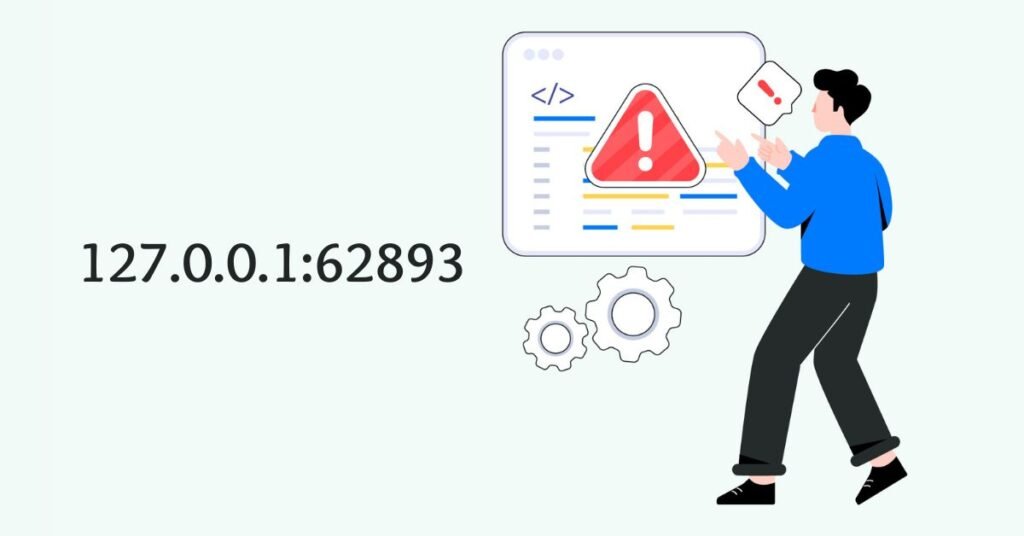Introduction
So your computer could talk to itself, run tests, diagnose problems and check applications all without ever having to go to the internet. Nice huh? That’s where 127.0.0.1 comes in, a small but mighty part of networking that allows self communication. And when paired with a port like 62893 it gets even more specific for developers and tech users. This post will demystify 127.0.0.1:62893, explain how it works and why it’s a superpower for local testing and development.
What is 127.0.0.1?
Definition of the Loopback Address
The 127.0.0.1 address is called the loopback address or simply “localhost”. Think of it as your computer talking to itself. If you’ve ever had a moment where you muttered to yourself “Is this working?” — that’s what 127.0.0.1 does for your computer. It sends data back to the same device it came from, without ever leaving the system.
How Does It Work?
When data is sent to 127.0.0.1 it doesn’t go out into the wild internet. Instead it stays local, allowing the computer to simulate a network connection. This is perfect for developers who need to run tests, debug code or troubleshoot applications without opening up their work to external traffic.
Development Use Cases
Developers use 127.0.0.1 for server side testing and application debugging. If you’re building a website and want to see how it works live but without the risks of public exposure — localhost is your safe space. It’s like testing a new recipe in your own kitchen before serving it at a dinner party. Whether it’s testing an API, checking web server functionality or fine tuning a database — 127.0.0.1 is the sandbox where the magic happens.
What is 62893
What is a Port?
Ports are like doors in a house, each one leading to a different room or application. In networking a port is an endpoint for communication, assigned a unique number so multiple services can run on the same IP address without conflict. The combination of an IP address and a port, like 127.0.0.1:62893, directs data to a specific application or service.
What’s special about 62893?
Port 62893 is what we call a dynamic or private port. Unlike well known ports like 80 (http) or 443 (https) 62893 isn’t assigned to any standard service. This makes it flexible and perfect for temporary or custom connections. Developers often use dynamic ports like 62893 for personal projects, internal tools or specialized software setups.
Examples
Web development tools, database servers and sandboxed environments might use 62893 for testing. For example if you’re running a local instance of an application in Visual Studio Code or another IDE it might be configured to use this port. By doing so, you isolate and manage traffic without stepping on the toes of other running processes.
Applications of 127.0.0.1:62893
Local Testing and Development
For devs 127.0.0.1:62893 is a trusted sidekick during testing. It creates a sandbox where you can run web servers, databases or even entire apps. This isolation means tests won’t touch live systems or the wider internet which can be both risky and impractical.
Imagine working on a new feature for an app. Running it on 127.0.0.1:62893 lets you try things out, make mistakes without consequence. The setup lets you catch issues before they get out of hand, save time, resources and a mess.
Remote Debugging
Benefits
Beyond testing 127.0.0.1:62893 also plays a role in remote debugging. Integrated development environments like Visual Studio Code use ports to allow devs to connect to local servers and inspect code in real time. This makes finding and fixing bugs easier. For example if a web app behaves differently under certain conditions remote debugging over 127.0.0.1:62893 will give you insight into what’s going on behind the scenes.
Security
While 127.0.0.1 is local 62893 can be exposed unintentionally and become a vulnerability. If a port used for local testing becomes public then unauthorized users can interact with it. It’s like leaving a side door open when you thought you closed it.
To avoid this make sure your firewall settings are up to date and only trusted users have access to local services. Always double check that dev configurations don’t leak into production environments without proper restrictions.
Common Errors and Troubleshooting
Error Messages
Errors with 127.0.0.1:62893 are usually config or port conflicts. A common one is “Disconnected from the target VM” or “Port already in use”. These are annoying but not impossible to fix.
Troubleshooting
First check that the service you’re trying to reach is running. If another app is already using port 62893 try changing the port or stopping the other service. Check your firewall settings to see if local connections are being blocked. Command line tools like ping or telnet can help you test connectivity and find the issue.
Running these checks is like putting on a detective’s hat and following clues but it’s all part of keeping your dev environment running smoothly.
Conclusion
Now you know 127.0.0.1:62893 is a powerful tool in software development and networking. It’s not just an address and a number; it’s part of your local testing arsenal, secure, controlled and efficient. Whether you’re debugging, simulating or setting up new software 127.0.0.1:62893 is invaluable.
As technology moves forward the loopback address and ports will remain a foundation for devs and tech geeks. So next time you see 127.0.0.1:62893 remember it’s not just a set of numbers; it’s your computer’s BFF.






